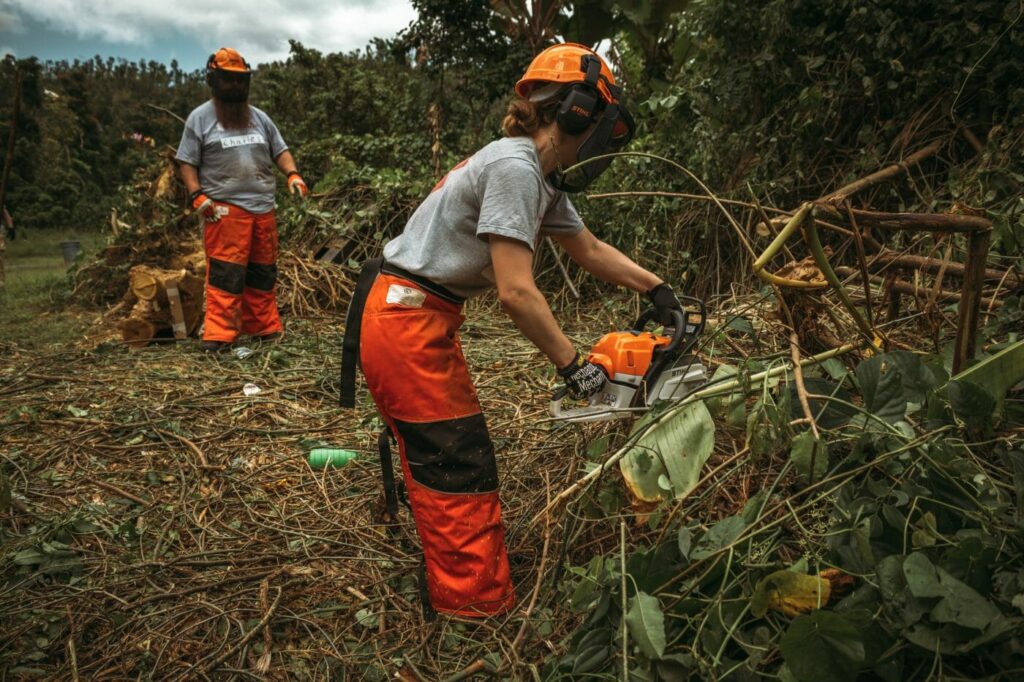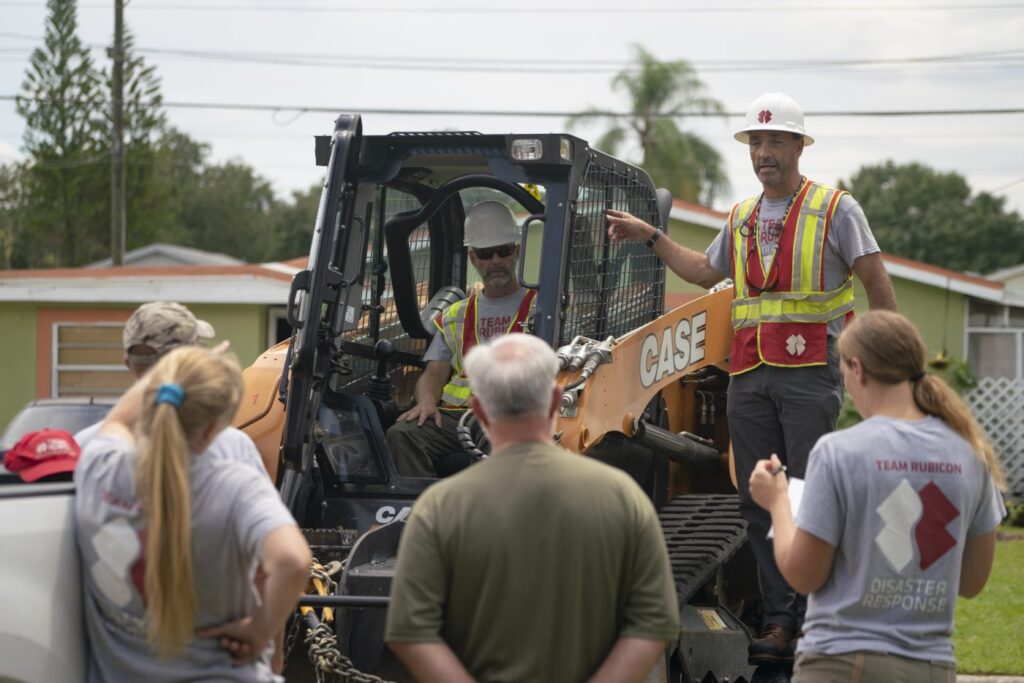A new capability is being tested in areas affected by the record-breaking storm, Hurricane Dorian, to allow Team Rubicon to help communities in a new way.
“Route Clearance intends to successfully remove physical debris that prevents individuals from accessing critical services,” said Kendra Pospychalla, Team Rubicon’s capabilities development manager. “This includes food, water, shelter, utilities, and medical services.” TR would potentially be the only nonprofit or non-governmental organization able to provide the service.
Pospychalla looked back at the 2017 hurricane season as to why route clearance capabilities could be an asset to serving disaster-stricken communities. Hurricane Maria devastated Puerto Rico, causing a cascade effect in the area. The impact caused a sequence of events that resulted in the disruption or denial of access to relief and recovery services and to medical care.

As a precursor to the route clearance capability, Team Rubicon deployed sawyer and medical teams to Puerto Rico after Hurricane Maria in 2017 to clear debris from waterways and provide medical care to remote areas.
Designing and developing new capabilities Team Rubicon could use in their arsenal is nothing new for Pospychalla. In the past two years, she was instrumental in setting into motion the Rebuild programs and Emergency Medical Assistance that is recognized by the World Health Organization.
“I get to make sure these programs can change people’s lives because Team Rubicon is all about serving those in need of help,” expressed Pospychalla.
Two teams selected to test pilot the Route Clearance capability mobilized and forward-deployed ahead of Hurricane Dorian to pre-stage themselves for the oncoming storm. As the specialists for route clearance team one, Pospychalla will look to the teams for input on what’s working and what isn’t.
“It’s like giving instant feedback without going to the help desk,” said Bob Mackay, one of the route clearance team leaders. Mackay and his team welcome the idea of having Pospychalla boots-on-the-ground with them to ensure they are following the procedures to perform route clearance.
“It shows commitment to this pilot program that she would come out here and see this through,” said Mackay. “[Pospychalla] is essentially using the scientific method to see if this will work and I have great respect for that approach.”

Team Rubicon Route Clearance Team 1 receive training about being a heavy equipment ground guide from HEO instructor Shawn Baker as they continue to standby for Hurricane Dorian arrival to the East Coast.
“She is spearheading the charge to execute this concept efficiently,” said Baker. “You’ll find her with a notepad in hand and writing down what our team is finding during this event, both positive and negative.”
Pospychalla uses a human-centered design approach when she investigates the testing phase during development.
“You have to think of it as your own needs,” explained Pospychalla. “You can empathize with the people who are performing the tasks and those benefiting from it.”
Team Rubicon is committed to leveraging the skills, experiences, and strengths of veterans across the country to mobilize in the immediate hours following a disaster. The non-profit organization provides relief to communities impacted by disasters upon request or when a need exists. This typically occurs when the scale of the event causes excessive duress on at-risk populations or infrastructure and strains available resources.



